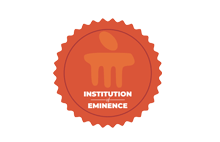A Biochemical and Molecular Insight to Wound Healing Properties of Traditional Indian Medicines in Normal and Diabetic Rats
Document Type
Article
Publication Title
Indian Journal of Pharmaceutical Education and Research
Abstract
Background: Honey, ghee, Glycyrrhiza glabra L. (GG), and Nerium indicum Mill. (NI) have been effectively used in Ayurveda and Indian folk medicine for healing both normal and diabetic wounds. However, the exact biochemical and molecular mechanisms involved are less discussed. The present study explores the wound healing efficacy of these traditional medicines in normal and diabetic rats using biochemical and molecular parameters. Materials and Methods: Normal and Streptozotocin-induced diabeticWistar rats were used for the study and inflicted with excision wounds. The test materials, i.e., honey, ghee, GG, and NI, were topically applied to the wounds singly and in combinations (H+G: Honey+Ghee and Tot-combination of all test materials). On the 8th and 16th days of healing, biochemical and molecular parameters were assessed using the tissues procured from the wound site. We quantified the levels of hydroxyproline and antioxidants (CAT-Catalase, GSH-Glutathione, SOD-Superoxide dismutase, MDA-Malondialdehyde). We also measured the mRNA expression of growth factors, i.e., Transforming Growth Factor-beta (TGFβ), fibroblast growth factor 2 (FGF2), Platelet-Derived Growth Factor (PDGF), and vascular endothelial growth factor (VEGF). Results: Biochemical analysis showed enhanced hydroxyproline levels in both normal and diabetic wounds treated with the test materials. The groups treated with GG in normal and NI and Tot in diabetic wounds showed statistically significant findings (p<0.05). Different study materials showed significant antioxidant properties at different intervals of wound healing. Similarly, different test materials enhanced the expression of different growth factors at the wound site. Conclusion: Result indicates that the wound healing properties of these natural traditional medicines are through their antioxidant and growth factor enhancing capability at the wound site.
First Page
s359
Last Page
s371
DOI
10.5530/ijper.58.2s.39
Publication Date
1-1-2024
Recommended Citation
Prabhath, Sushma; Bhat, Kumar M.R.; Pai, K. Sreedhara R.; and Kinra, Manas, "A Biochemical and Molecular Insight to Wound Healing Properties of Traditional Indian Medicines in Normal and Diabetic Rats" (2024). Open Access archive. 10938.
https://impressions.manipal.edu/open-access-archive/10938


